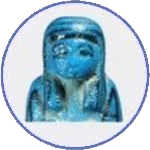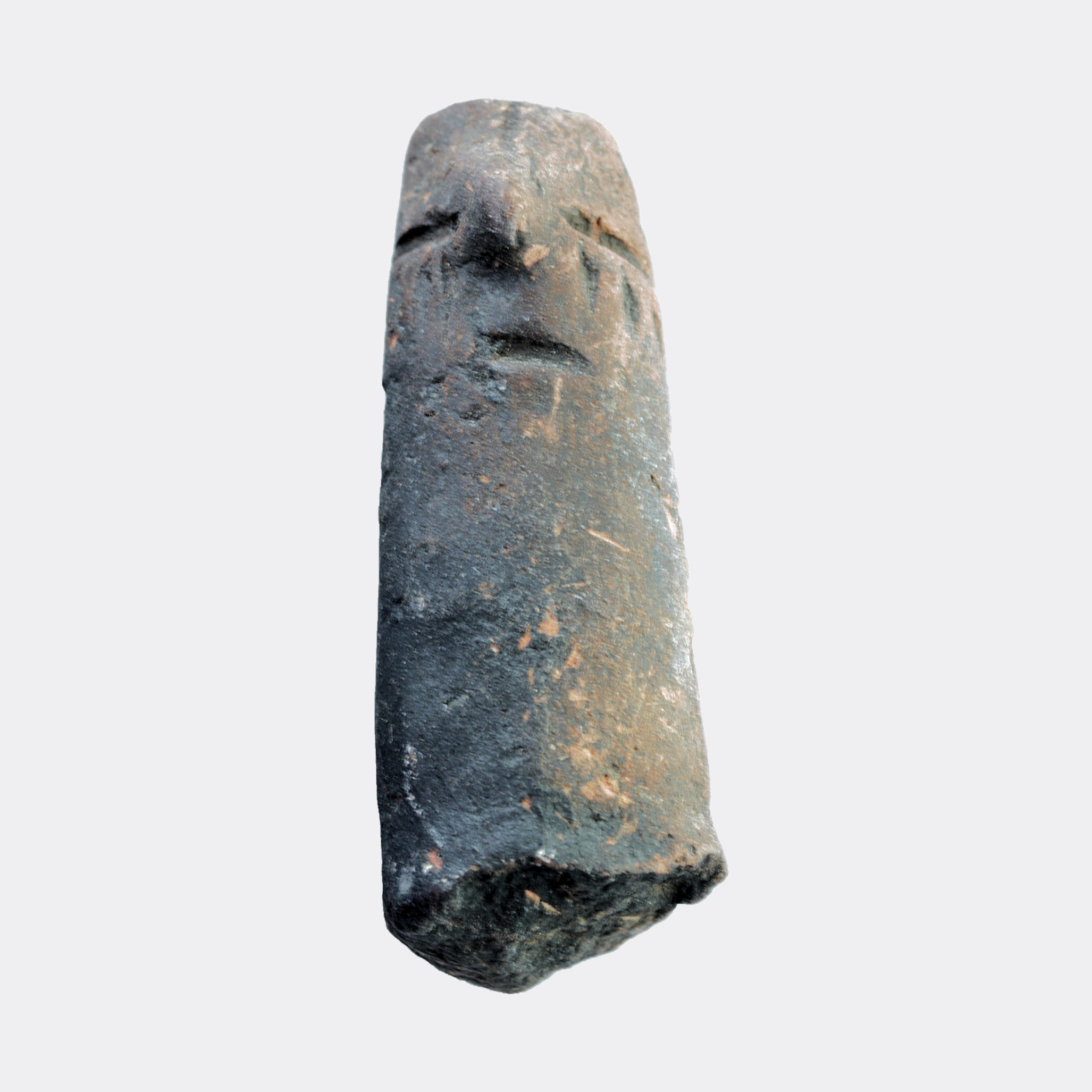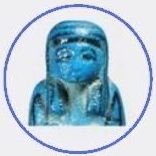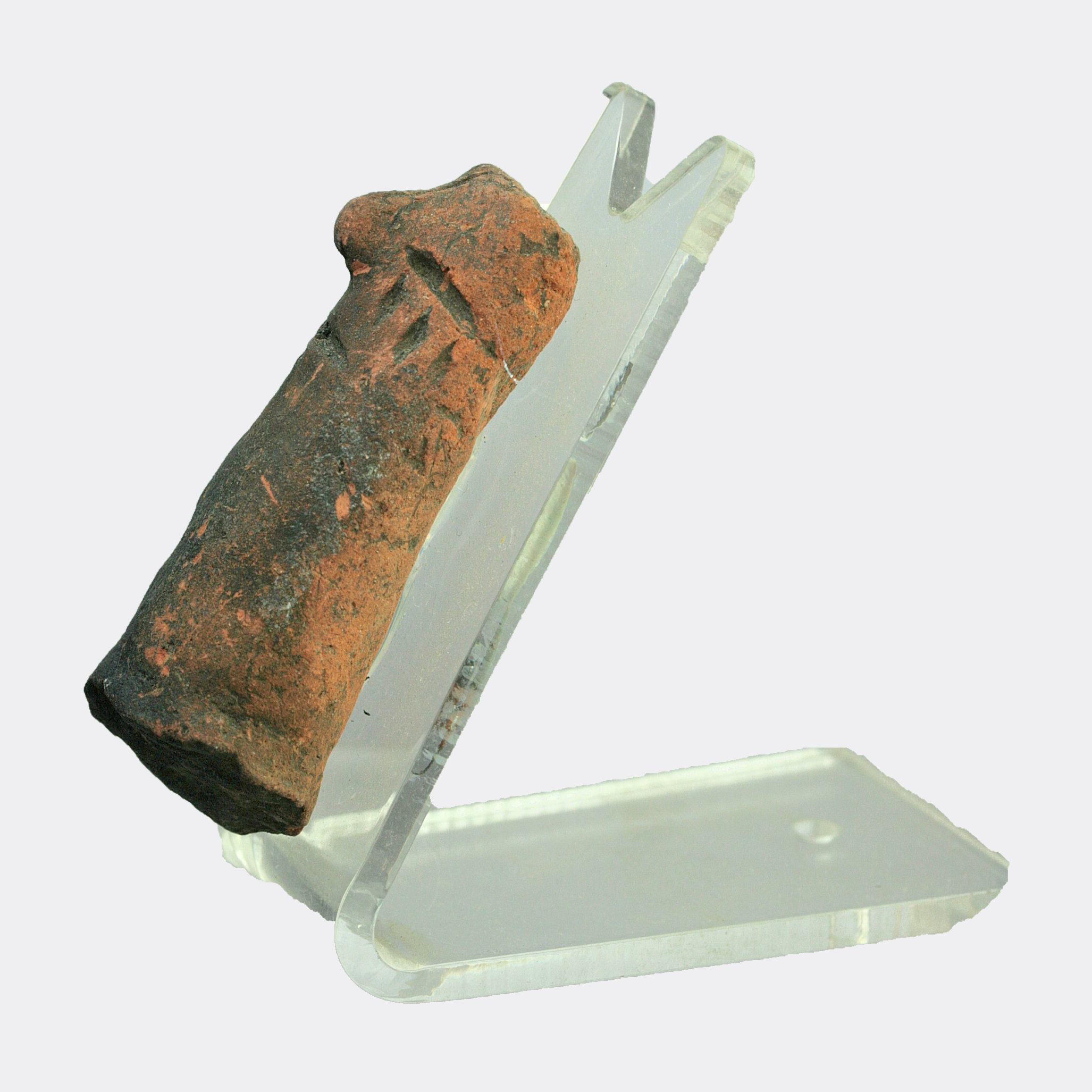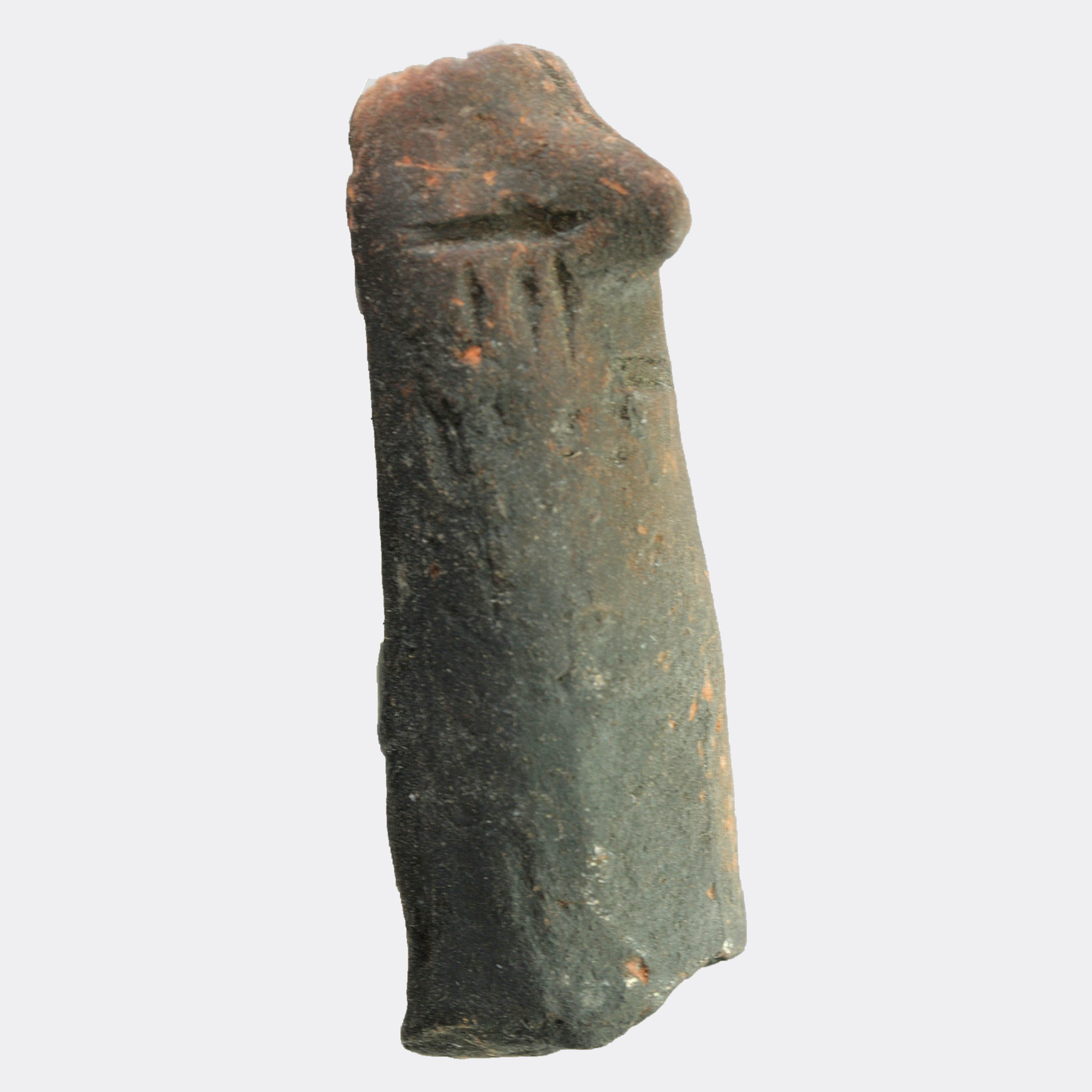Greek Thessalian Neolithic pottery head
G32£220.00
Sold
A head from a pottery votive figure or idol, the face formed with a pinched nose and incised details including scarifications or tears below the eyes.
During the Neolithic and Chalcolithic period the region of Thessaly in Central Greece developed a unique and distinctive artistic style, producing an array of human figures for votive purposes. These figures have not been studied as thoroughly as Cycladic or Minoan cultures but are no less striking and varied.
Culture
Greek, Thessaly, Neolithic period, c. 6500-5300 BC
Size
5 x 2 cms, 6.1 cms including stand
Condition
Fragment as shown, surface discolouration due to exposure in a house fire. Glued on the back to a perspex stand
Provenance
Ex. deceased estate, Cambridgeshire, UK; collection formed mostly pre-2000 from auctions and fairs within the UK.
For further reading on the subject and numerous illustrations of similar fragments we recommend visting the following links where two excellent online books are available for free:
https://www.aegeussociety.org/en/new_book/figurines-of-neolithic-thessaly-a-presentation-volume-ii-online-publication/
https://www.aegeussociety.org/en/new_book/figurines-of-neolithic-thessaly-a-presentation-volume-iii-the-a-bastis-collection-online-publication/
For an illustration of similar heads in the National Museum Athens, please see:
https://commons.wikimedia.org/wiki/File:Ancient_Greece_Neolithic_Clay_Figurines_from_Thessaly,_6500-5300_BC_-_28348962912.jpg
